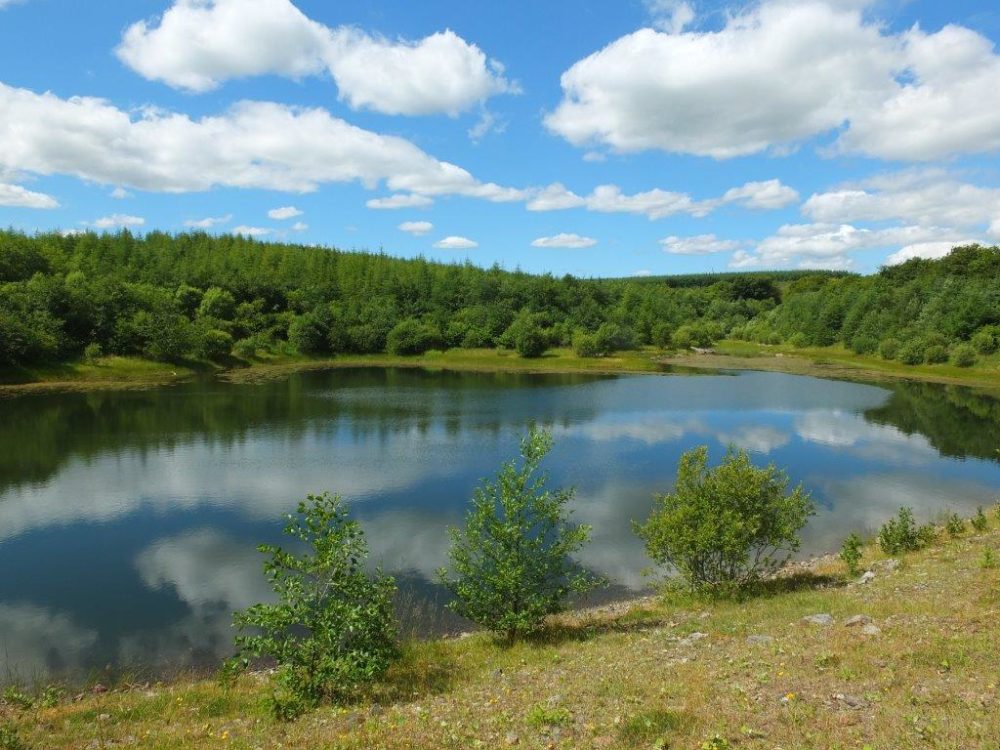The UK Forest Market Report 2018, launched today in London, has revealed that patience and shrewd forestry investment choices have paid dividends over the last 12 months.
Many UK forest owners who purchased their property 30 or 40 years ago are now reaping exceptional rewards for patiently growing their timber assets. Not only is their investment showing returns of 13.9% per annum – one of the best performing asset classes – but the price of standing timber has soared 30% in the last year alone.
The 20th edition of The UK Forest Market Report is produced by industry leaders Tilhill Forestry and John Clegg & Co and provides analysis of this growth and further commentary about forestry as an investment choice. The report also features a study on the lowland woodland sector.
In discussing the performance of the commercial forestry market in the year to September 2018, the report describes a “brisk and robust” sector. A total of £104.2m of forest properties were traded in 2018. This is a 6% drop from 2017 but, interestingly, the market comprised a smaller number of higher value sales (57 in 2018 compared to 87 in 2017) with an average size of 196ha (149ha in 2017) and an average price of £1.83m (£1.28m in 2017). Scotland retained its dominant position in the marketplace with 69% of the sales recorded.
The report points out that standing timber prices have rocketed by around 30% over the last 12 months – great news for owners whose forests are now ready to harvest.
Additionally, despite political uncertainty, the report suggests that new agricultural policies may be on the horizon that will encourage a more integrated approach to land use particularly with forestry and farming.
The report says: “Overall we believe that the market continues to behave robustly in the light of the wider economic environment, demonstrating the strength and resilience of forestry as a long-term investment. New investors are coming through to investigate the marketplace with many of these based within the EU and reassuringly confident to invest in the UK.”
Peter Whitfield, Business Development Director for Tilhill Forestry, explains: “Motivations for investors vary but the main reasons are long-term financial returns, the potential for tax planning, long-term capital growth particularly within a pension, or the amenity value.
“The wider economic climate remains highly volatile but, in this environment, the security of owning real assets, the improvement in timber prices and general confidence that these can be sustained and strong political support for the industry together with the amenity values mean that forestry remains an attractive choice for many investors.”
Fenning Welstead, Director John Clegg & Co., said that the level of competition was “remarkable” and that the demand from investors seeking ownership of forestry assets has never been stronger in his experience.
He added: “The upward movement in the price of timber in the last 12 months has been staggering. It has been driven partly by the weak pound and more expensive imports but also, I believe, by the dawning realisation that the supply of fibre is finite.
“The UK is the second largest timber importer in the world. With more interest in forestry and the wide range of benefits forests offer, and an increase in planting, perhaps we can start to reduce the amount of timber we import.”
More conifers were planted in Scotland last year than in any year since 2000 and encouragingly, the report says, Forestry Commission Scotland has reported strong demand for woodland creation schemes for 2018/19 and 2019/20 with over 12,000ha being assessed – well exceeding their target of 10,000ha per year.
The forestry grant budget in Scotland has been increased for 2018/19 to accommodate the increased demand – a clear sign of how the Scottish Government perceives the importance of forestry as part of the rural economy.
The report welcomes this and other “very positive steps” taken in support of commercial afforestation such as the announcement of a Forestry Investment Zone in the north of England, the appointment of two Forestry Commission Woodland Creation Officers and the appointment of Sir William Worsley as the Tree Champion for England. Forestry also enjoyed a mention in the latest budget with £60 million of funding to be put in place for tree planting in England.
Another encouraging sign centres on the concept of Natural Capital which is at the heart of the UK’s 25 Year Environment Plan. It recognises that forestry is more than just an asset for timber extraction and offers much broader societal benefits such as cleaner air, flood reduction, carbon storage and health improvement.
For a copy of the Report please click here.
Sign up to our mailing list for more updates and invites:



